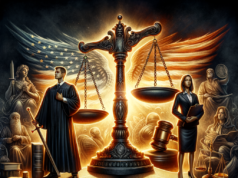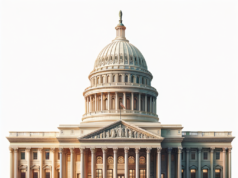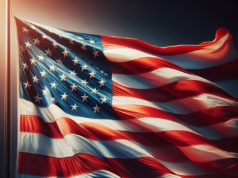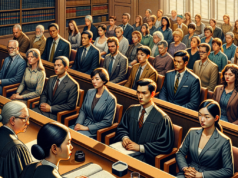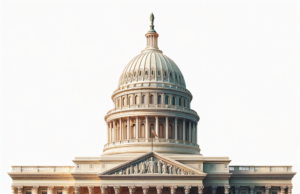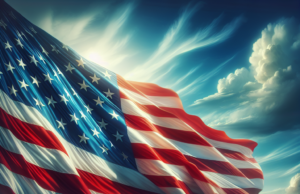Contents
- 1 Understanding the Factors Behind the Unprecedented Surge in Firearm Registrations
- 2 Analyzing Recent Trends: Statistics on Firearm Registrations Across the Nation
- 3 The Role of Societal Tensions in Driving Increased Gun Ownership
- 4 Legislative Changes: How New Laws Influence Firearm Registration Rates
- 5 Public Safety Concerns: The Impact of Rising Gun Registrations on Communities
- 6 Looking Ahead: What This Surge Means for Future Gun Policy and Regulation
 In recent months, the United States has witnessed an unprecedented surge in firearm registrations, a trend that has raised eyebrows among policymakers, law enforcement agencies, and the general public. This phenomenon is not merely a statistical anomaly; it reflects deeper societal tensions, legislative changes, and evolving perceptions of safety. As communities grapple with the implications of this surge, understanding the underlying factors becomes crucial for informed discussions about gun ownership and public safety.
In recent months, the United States has witnessed an unprecedented surge in firearm registrations, a trend that has raised eyebrows among policymakers, law enforcement agencies, and the general public. This phenomenon is not merely a statistical anomaly; it reflects deeper societal tensions, legislative changes, and evolving perceptions of safety. As communities grapple with the implications of this surge, understanding the underlying factors becomes crucial for informed discussions about gun ownership and public safety.
Understanding the Factors Behind the Unprecedented Surge in Firearm Registrations
The recent spike in firearm registrations can be attributed to a confluence of factors that have left many Americans feeling vulnerable. The COVID-19 pandemic, social unrest, and heightened political polarization have all contributed to a climate of uncertainty. Many individuals are seeking firearms for self-defense, believing that personal safety is increasingly at risk. Additionally, the rise of online gun sales and the proliferation of social media discussions surrounding firearms have made it easier for potential gun owners to navigate the registration process. This combination of fear, accessibility, and a growing cultural acceptance of gun ownership has led to a significant increase in registrations across the nation.
Analyzing Recent Trends: Statistics on Firearm Registrations Across the Nation
According to data from the Bureau of Alcohol, Tobacco, Firearms and Explosives (ATF), firearm registrations have surged by over 40% in the past year alone. States like Texas, Florida, and California have reported the highest increases, with some localities seeing registration numbers double compared to previous years. This trend is not limited to handguns; rifles and shotguns are also experiencing significant upticks in registration. Furthermore, the demographic profile of new gun owners is shifting, with an increase in women and first-time buyers entering the market. These statistics paint a vivid picture of a nation increasingly inclined toward firearm ownership.
The Role of Societal Tensions in Driving Increased Gun Ownership
Societal tensions have played a pivotal role in driving the surge in firearm registrations. The past few years have been marked by widespread protests, civil unrest, and a growing sense of division within communities. Events such as the Black Lives Matter movement and debates over police reform have led many individuals to feel that they must take their safety into their own hands. Additionally, the rise in violent crime rates in certain urban areas has further fueled this sentiment. As people perceive their environments as more dangerous, the desire to own a firearm for protection becomes a compelling choice for many, reflecting a broader societal shift toward self-reliance in matters of safety.
Legislative Changes: How New Laws Influence Firearm Registration Rates
Legislative changes at both the state and federal levels have also influenced firearm registration rates. Several states have enacted laws that either expand or restrict access to firearms, creating a patchwork of regulations that can drive spikes in registrations. For instance, states that have recently passed laws allowing for permitless carry or expanded background checks have seen corresponding increases in registrations as individuals rush to comply with new requirements. Conversely, proposed federal legislation aimed at tightening gun control measures has led to a sense of urgency among potential gun owners, prompting them to register firearms before any potential restrictions take effect. This dynamic illustrates the direct correlation between legislative action and public response regarding firearm ownership.
Public Safety Concerns: The Impact of Rising Gun Registrations on Communities
The implications of rising gun registrations extend beyond individual ownership; they pose significant challenges for public safety and community dynamics. Law enforcement agencies are increasingly concerned about the potential for more firearms in circulation to lead to higher rates of gun-related incidents, including accidental discharges and domestic violence situations. Additionally, communities are grappling with the psychological effects of living in an environment where more individuals are armed. This shift can alter social interactions and increase tensions, particularly in areas already facing challenges related to crime and violence. As communities adapt to this new reality, the balance between individual rights and collective safety becomes a pressing issue.
Looking Ahead: What This Surge Means for Future Gun Policy and Regulation
As the surge in firearm registrations continues, the future of gun policy and regulation remains uncertain. Policymakers are faced with the challenge of addressing the concerns of both gun owners and advocates for stricter gun control. The current landscape suggests that any attempts to implement new regulations may be met with significant pushback from a growing base of gun owners who feel their rights are under threat. Conversely, advocates for gun control are likely to intensify their efforts to push for measures aimed at reducing gun violence and enhancing public safety. This ongoing tug-of-war will shape the future of gun policy, with potential implications for everything from background checks to the availability of certain types of firearms.
The unprecedented surge in firearm registrations reflects a complex interplay of societal factors, legislative changes, and evolving perceptions of safety. As the nation grapples with the implications of this trend, it is imperative for stakeholders to engage in informed discussions about gun ownership, public safety, and the future of firearm regulation. Understanding the motivations behind this surge will be crucial in navigating the challenges ahead and fostering a balanced approach to gun policy that respects individual rights while prioritizing community safety.



